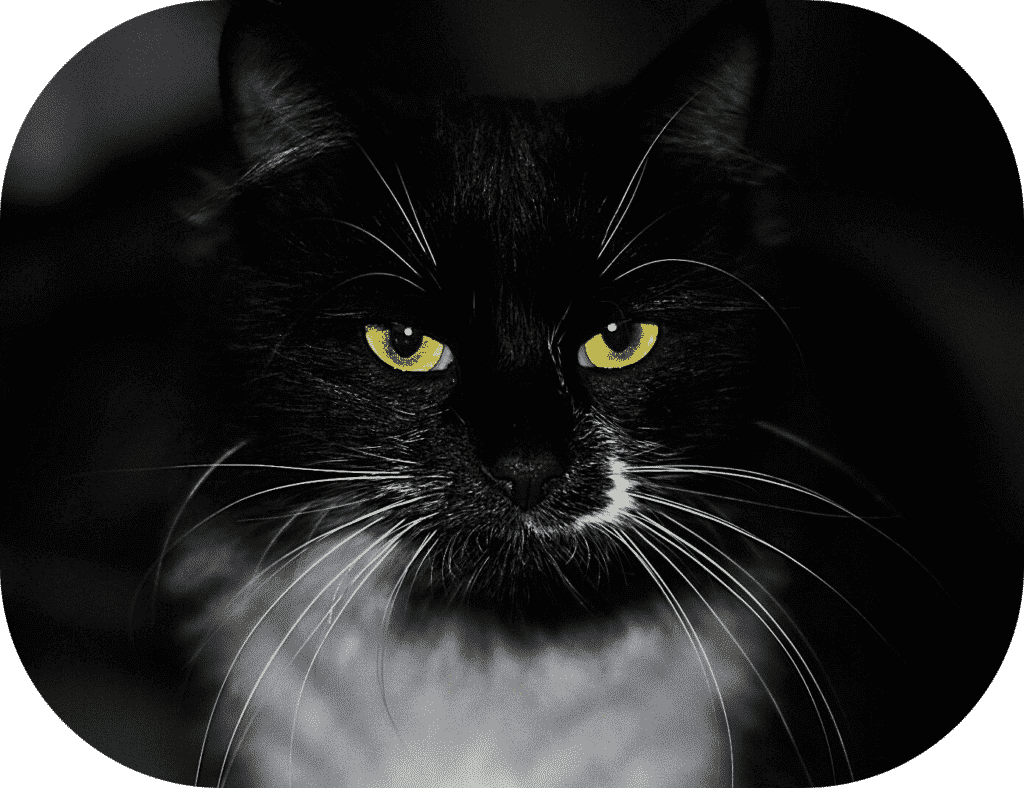There is a question that arises every single time among cat parents, and that is: can cats see color? Can they see the same way we do? Out of curiosity or in order to provide cats with the best possible care, it is very important for us pet parents to know how our cats’ vision works.
Can cats see only black and white?
No, cats can definitely see color; however, they can’t see it the way we do. To put it in simple words, a cats’ sight is similar to a human who is color blind.
Can cats see color?
- They can discriminate some color shades of blue, violet, yellow, and green, but they are not so able to distinguish among the reddish palette.
- They can’t see hues and saturation as we humans do.
- Their vision is somehow blurry; this means they see colors in a ‘washed out’ way.
'To put it in simple words, a cat's sight is similar to a human who is color blind'.
Cones and rods
Cones: They are related to day vision and are in charge of color perception. Also, thanks to them, eyes are more sensitive to light.
Rods: They are related to night and peripheral vision. They make eyes more sensitive to movement, and they don’t have anything to do with the way eyes perceive color.
On the one hand, cats have fewer cones than humans, that is why they have trouble identifying the diverse range of colors. On the other hand, they possess more rods, which makes them super avid and rapid in detecting small and peripherical movements that we humans don’t even notice (That is why they are natural hunters, and they go crazy when playing with a ball of wool). Besides, contrary to humans, cats can see almost perfectly at night.
Why do cats’ eyes glow in the dark?

Cats’ eyes have a thin layer of cells in their retina, called the tapetum, which reflects the light, and acts as a little mirror. They also have elliptical pupils, that allow them to capture as much light as possible. Thanks to them, cats can spot the available light at night and thus, see better in the dark.
Cat sight vs Human sight
So, do cats see color? Yes, absolutely!
Even though cats can’t distinguish the wide range of colors we humans see (approximately between 2 and 3 million colors), it doesn’t mean they can’t spot them. Cats see color, they just see them in a whole different way.
Besides, compared to humans, cats are more near-sighted. It is as if they would suffer from myopia. However, as we’ve already mentioned, cats have a better peripherical vision than humans: their degrees of vision are 200, while humans are 180.
This information can be super useful for us, pet parents, to make the most out of our cats’ lives. Regarding toys, choosing striking colors like yellow and blue (rather than red or orange) can improve our cats’ playing experience by making games much more engaging.
The importance of vitamin A and fatty acids
As we have just mentioned, cats are natural hunters who rely on their sight to perform their favorite activities. Therefore, it is very important to support your cats’ sight through supplements and nutrition.
According to the AAFCO, adult cat food should provide 9000 UI of vitamin A per kg of food.
Usually, animals get vitamin A from beta-carotenes; but unlike other animals, cats’ possibility to convert beta-carotene to vitamin A is significantly limited. In addition, when cats experience a deficit of vitamin A, it is released through the bloodstream and can affect the eye. Hence, cats need to get a straight source of vitamin A that can be used immediately.
Besides, Fatty acids are also essential for our cats’ development. They have anti-inflammatory properties which bolster the immune system and improve overall skin and coat health. You can try our Omega-3 Soft Chews, which contain all the nutrients your cat needs to carry a healthy lifestyle.
















